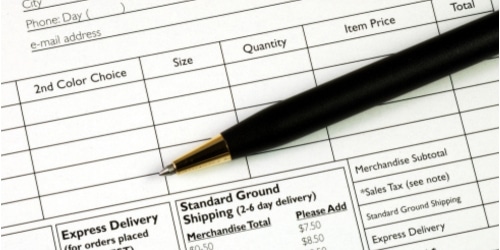Ever placed an order with a company and gotten a headache trying to track it down later? You’re not alone. That’s where PO numbers come in – they’re the secret weapon of smooth business transactions. But what exactly is a PO number, and how can you use it to your advantage?
We’ve all seen them – those cryptic strings of letters and numbers on invoices and purchase orders. That, my friend, is a PO number, short for purchase order number. It’s a unique identifier assigned to each purchase order, acting like a fingerprint for that specific transaction.
PO numbers are like superheroes for businesses – they streamline communication, prevent errors, and make tracking orders a breeze. So, how do you create and use these handy PO numbers? Buckle up, because we’re about to dive into the world of PO numbers and show you how to leverage them for a smoother, more efficient business experience. But first of all, will start by knowing what is PO number.
Key Point:
- PO numbers are unique identifiers for orders: Like a fingerprint, they track specific purchases from start to finish.
- Buyers create PO numbers: They are included on purchase orders sent to suppliers.
- Upon receiving a PO, suppliers reference the number throughout the transaction, from packaging goods to issuing invoices.
- PO numbers streamline record-keeping and help prevent errors by ensuring accuracy and clarity in transactions.
- Understanding how to locate, create, and utilize PO numbers enhances efficiency and facilitates smoother business transactions.
What Is a PO Number?
The (PO) purchase order number (or order number) is a unique reference identifier issued by the buyer to assist trace the order. The code can be created manually by the company’s management or automatically using accounting software.
PO numbers will also be used throughout the transaction, including on client phone calls, shipping forms, and, in certain cases, on the associated sales invoice, to ensure that the invoice and order match.
READ ALSO: 11+ BEST PURCHASE ORDER SYSTEM FOR SMALL BUSINESS 2024
Who Provides The PO number?
When it comes to providing a Purchase Order (PO) number, the responsibility typically lies with the purchaser or buyer. In most cases, the entity or individual purchasing goods or services is the one who issues a PO number. This number serves as a unique identifier for the transaction, helping both parties keep track of orders and payments.
The process usually begins when the buyer creates a purchase order, specifying details such as the items or services being purchased, quantities, prices, delivery dates, and any other relevant terms and conditions. Once the purchase order is generated, it is sent to the supplier or vendor.
Upon receiving the PO, the supplier verifies the details and then fulfills the order accordingly. They may reference the PO number throughout the transaction process, from packaging the goods to issuing an invoice for payment.
In some cases, particularly in larger organizations or government agencies, the procurement department or purchasing team is responsible for generating PO numbers. However, regardless of who generates the PO, it’s essential for both parties to ensure accuracy and clarity to facilitate smooth transactions and avoid any misunderstandings or disputes.
How Do I Find My PO Number?
Locating my PO number can seem like a daunting task, but trust me, it’s a piece of cake once you know where to look. As a purchaser, I keep meticulous records of every transaction, and the PO number is the key to unlocking that treasure trove of information.
First, check your email. Many companies send purchase orders electronically, so look for emails with subject lines mentioning “purchase order” or “PO for your order.” These emails usually contain the PO number right there in the body of the message.
If you’re dealing with a paper trail, grab your physical invoices or receipts. PO numbers are BFFs with invoice numbers, so they’re often displayed prominently near the top of the invoice, sometimes labeled as “Customer PO Number” or simply “PO Number.” Scan the invoice for a section dedicated to order details – that’s a prime location for the PO number. Still striking out? Don’t panic! Contact the company you placed the order with. Their customer service team should be able to access your order history and provide the elusive PO number. Be ready to give them some additional information like your order date, product details, or anything else that might help them pinpoint your specific purchase.
Now you’re a PO number pro! Remember, this handy code can be a lifesaver when you need to track an order, inquire about a return, or reference a specific transaction.
READ ALSO: Purchase Order Process: Types, Examples & Format
How Do You Get A PO Number?
Getting a PO number? Easy! Now, how it happens depends on whether you’re the buyer placing the order or the seller fulfilling it.
If you’re the buyer, creating a PO number is your turf. Some businesses have a designated system – maybe fancy accounting software that spits out unique PO numbers automatically. But if you’re a smaller operation, you can get creative. Just keep it simple and sequential. Start with PO number one, then two, three, and so on. You can even throw in the year, like PO-2024-001, for extra organization.
As a seller, you won’t typically generate the PO number yourself. It’ll come from the buyer in the official purchase order they send over. This PO number acts as a reference point for both you and them. You’ll use it on invoices, packing slips, and any communication about that specific order. Think of it as a handy code that keeps everyone on the same page.
What is An Example of A PO number?
Alright, let’s break down some real-world PO number examples! Remember, there’s no one-size-fits-all format, but companies often design them for easy internal use. A common format is simply sequential numbers. For instance, my first PO number for a new office chair might be PO0001. The next order could be PO0002, and so on. This works well for small businesses with fewer purchases.
But what if you need more info on the number itself? Companies can include the year! Say I order supplies in March 2024. My PO number could be PO2024-03 – clear, concise, and tells me the year of the order. We can get even more specific. If I frequently order from a specific department, like marketing materials, I might use PO2024-03-Marketing-001. This tells me the year, month, and department involved (marketing), and it’s the first order for that department this month. See how flexible PO numbers can be?
DOWNLOAD HERE!!!
READ ALSO: HOW TO ADDRESS A PACKAGE: Addressing an item for prompt delivery
Why Do You Need A PO Number?
PO numbers become your best friend when it comes to managing your business. Here’s why:
First, they’re lifesavers for tracking. Ever placed an order and then played phone tag with customer service for weeks? PO numbers eliminate that. They act as a reference code, letting you instantly pull up your order details – what you bought, how much you’ll pay, and the expected delivery date. Need to check if that office chair finally shipped? Just whip out the PO number, and you’re good to go.
PO numbers also become your internal order police. They help prevent mistakes by ensuring everyone’s on the same page. Imagine accidentally ordering a thousand staplers instead of ten. With a PO number, there’s a clear record of what was actually approved, preventing those oh-so-expensive mix-ups.
Finally, PO numbers are your accounting BFFs. They make record-keeping a breeze. Instead of sifting through mountains of invoices, PO numbers help you quickly match purchases to their corresponding orders and invoices. This saves you tons of time (and frustration) come tax season! So next time you’re placing an order, don’t underestimate the power of the mighty PO number.
What is The Difference Between Invoice Number and PO Number?
Ah, invoice numbers and PO numbers – those two seemingly similar codes can cause some serious confusion. But fear not, invoice warrior! I’m here to break it down for you in a simple table.
Let’s see who does what:
| Feature | Invoice Number | PO Number |
|---|---|---|
| Who Creates It? | Me, the seller! | You, the buyer! |
| When is it Created? | After I deliver your goods or services. It’s my bill to you. | Before I even start working. It’s your official request for my awesomeness. |
| What’s its Purpose? | Tracks the sale and tells you exactly how much you owe me. | Tracks the purchase and ensures you’re getting what you ordered. |
| Example? | INVOICE-2024-001 | PO-2345 |
See the difference? Invoice numbers are all about me – they track what I’ve sold to you. PO numbers are all about you – they ensure you’re getting what you paid for. Now, invoices often reference PO numbers, which helps both of us match things up. It’s like a secret handshake between our accounting departments!
READ ALSO: ACCOUNTING INVOICE: Definition, How to Record It, and Free Software
Top P.O. Number Generators
The term, “buy order number generator” refers to a limited set of resources, specifically those that may be purchased. Purchase order number creation is embedded into many cloud-based accounting solutions and ERPs, so if you use one of those systems to construct your purchase orders and invoices, you should have no issue producing these types of identifiers.
If you create your purchase orders manually or through an application like Excel — and you don’t care about your purchase order numbers being sequential or of a specific length — you can use a random number generator or a random number generation algorithm to create your purchase order numbers.
That being said, it’s probably in your best interest to use a dedicated accounting or ERP software to generate your purchase orders and, consequently, your purchase order numbers.” Unless you have a very low number of sales, investing in one of those systems would most likely save you a lot of time and work.
Conclusion
So, there you have it! PO numbers – those little heroes of the business world. By understanding how to create and use them, you’ve unlocked a powerful tool for smoother transactions.
Think of a PO number as your personal order knight in shining armor. It clarifies your needs for the seller, ensures you get what you paid for, and keeps track of everything along the way. No more order headaches or mystery invoices! Plus, PO numbers are like little time machines – they help you find past purchases with ease, making record-keeping a breeze.
So, the next time you’re placing an order, don’t forget the power of the PO number. It’s a simple tool with a big impact, making your business transactions smoother, faster, and less error-prone. Now go forth and conquer that shopping list with confidence – your trusty PO number is by your side!
How to Calculate Revenue In Business Accounting (Steps and Examples)
Mastering E-commerce Optimization: Strategies for Maximum Sales Growth
Inside Sales vs Outside Sales: Ways to Balance the Roles for Growth
Sell Sheet: How to Create Effective Sheets (With Examples and Templates)






